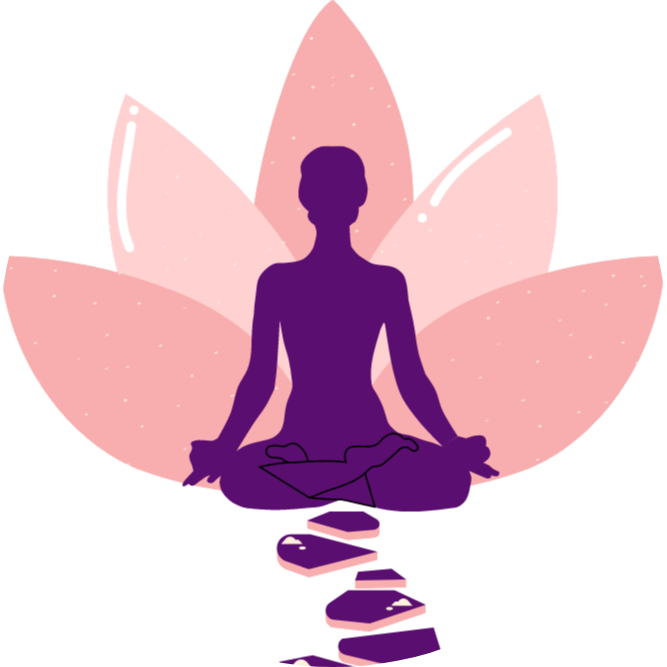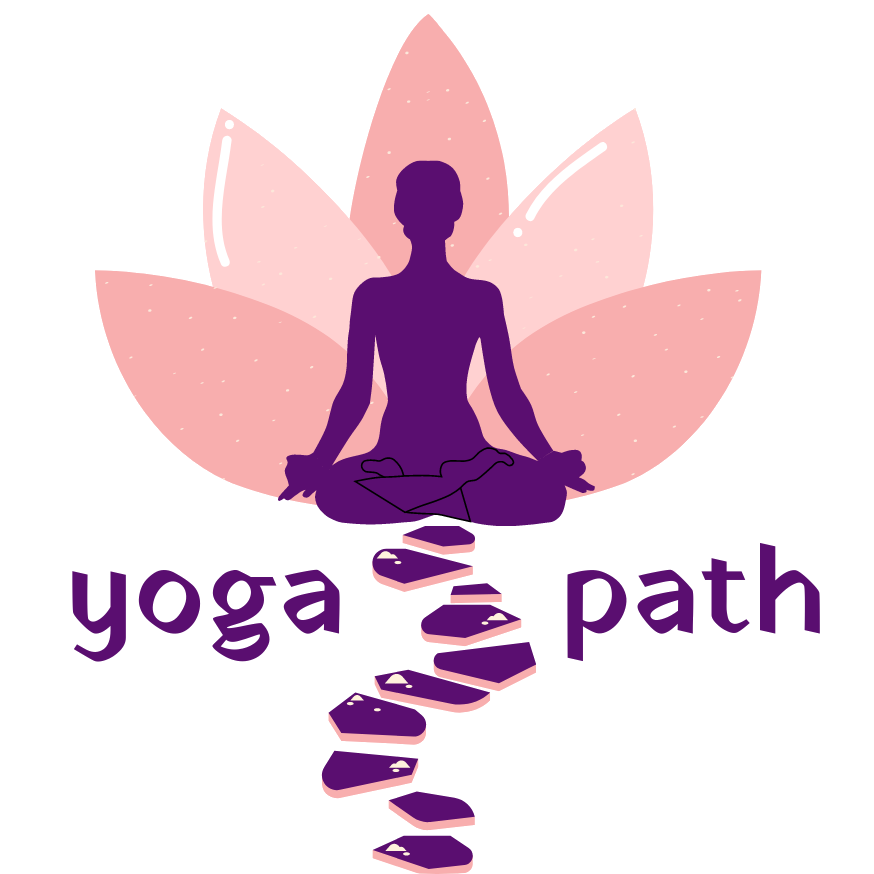Alleviate Diabetes
ASANAS FOR DIABETES
Asanas to manage Diabetes
One must not take Diabetes lightly. You must combat diabetes, through diet, lifestyle, and exercise and take proper complete care of your body.
Apart from relaxing the body, Yoga helps lower blood pressure and blood sugar levels, improves circulation, and lowers stress levels. Experts hence recommend yoga for diabetes management.
Proper, regular and consistent Yoga rejuvenates the endocrine, neurological and circulatory systems and strengthens the immunity. It provides substantial relief in chronic diseases. Yoga if done properly and regularly ‘holds promise’ as an effective therapy for diabetes.
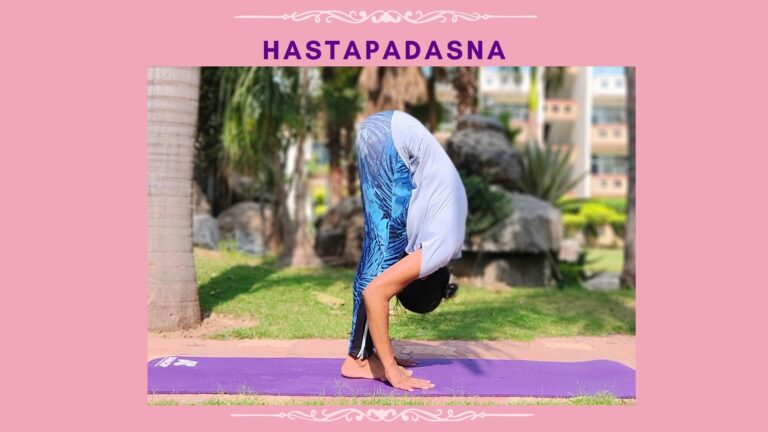
Standing Inverted Position – Forward Bend
Hastapadasana meaning Hand to Feet Pose
This asana flows with humility and acceptance of the self along with surrender to the universe. It represents a cycle of energy generated within the body and offered to the universe.
Stand with your feet together and hands at the side.
While inhaling, raise both your hands from the front above your head.
While exhaling, bring the your hands down to touch your toes or grasp your ankles keeping your knees straight.
Remember to keep your ears and hands together as a unit as you bend down or rise up. Keeping your knees straight, try to touch your forehead to the knees. Stay in the position for 6 seconds breathing normally – extend to 2 minutes.
While inhaling, raise your hands up above your head and exhaling bring your arms down to the sides.
Contraindications:
Hypertension, Cardiac ailments, Pregnancy, Peptic ulcers, Hernia, Back or Spinal Injuries, Cervical spondylitis, Slipped disc and serious Eye disorders such as glaucoma and myopia.
Benefits:
Results in extreme stretching of back and leg muscles
Brings flexibility to your spine
Abdominal compression provides good circulation and massage to abdomen and pelvic organs
Tones the abdominal wall and reduces unnecessary fat deposits in the abdominal area
Induces clavicular breathing and aids proper ventilation of the uppermost part of the lungs
Stimulates the nervous system and endocrine system
Improves blood circulation
Aids sleep
Adho Mukho Svanasana – Inversion Asana
Adho meaning down, mukho meaning Face, svana meaning Dog. This asana too is part of the flow of surya namasakar (salute to the sun).
The name is derived from the way the dog stretches his front limbs when getting up.
In this pose, we can start by sitting on all fours in a table top position with knees and palms on the floor. The palms are at shoulder distance on the floor also the knees and feet are at hip distance apart. Lift the knees up to raise the hips up as you inhale. The weight of the body is on both palms and feet. With both arms straight at the elbows and the legs being straight at the knees the hips are raised up the head is down with arms close to the ears. We try to press the chest into the thighs just as we try to close a book to make a V shape. As you exhale, lower down the knees, hips and back into table top.
Contraindications:
Pregnant women, high blood pressure, Weak eye capillaries,
detached retina, or any other infection or inflammation of the eyes and ears and shoulder or back injury
Benefits:
Stretches the hamstring and calf muscles
Strengthens arms and shoulders, legs and ankles
Relaxes and strengthens back muscle
Strengthens abdominal muscles and core
Improves posture
And calms the heart
Urdhva Mukha Svanasana – Prone Asana
Urdhva = Upward, Mukha = Face, Svana = Dog, Asana = Pose
Urdhva Mukha Svanasana or upward dog pose is a back-bending yoga posture that strengthens the arms, wrists and spine. It also stretches the back and relieves the body of lower back ache.
For this pose, lie flat on your abdomen with the top of your feet facing downwards and soles facing the ceiling.
Bend your elbows and place your palms beside on the floor close to the waist.
As you inhale, press your palms firmly on the mat and slowly lift your torso upwards, hips and knees off the mat. The entire weight of the body should be resting on the palms and on the feet. Gaze straight ahead. Ensure that your wrists are stacked under your shoulders and the neck is not strained. Make sure the shoulder is rolled back ( not hunching) and chest is out. And there is space between the ears and the shoulders.
Stay in this pose for a couple of breaths.
As you exhale, slowly lower your knees, hips and torso back on the mat. And slowly lower the torso and head in front.
Contraindications:
People with Carpel Tunnel Syndrome or a back injury and Pregnant women should refrain from doing this asana.
Benefits:
Stretches and strengthens the back, relieves lower back ache.
Most of the body weight is borne by the arms and wrists, thus strengthening them.
Improves the body posture and also stimulates the abdominal organs.
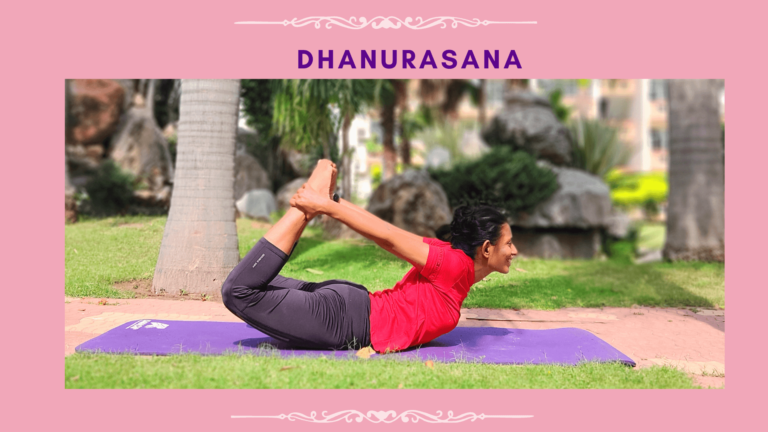
Prone Position / Lying Down Asana
The Asana resembles a bow or dhanusha, hence the name.
Lie on the stomach (prone position), on a mat, legs stretched out straight and feet together with toes pointing outwards.
Slowly, raise the head and the neck and simultaneously bend the legs at the knees. Grasp the ankles of the legs with the respective hands.
Inhaling, in 3 seconds, raise the head upwards, Simultaneously, pull the legs also upwards to give the body a bow shape.
Hold this pose for 6 seconds.
Exhaling, in 3 seconds, bring the head down and simultaneously, release the ankles and unfold the legs.
Remember to raise and lower each vertebrae slowly relieving the spinal pressure by stages. Practice 3 rounds. Hold the final position for 30 seconds and slowly till 2 minutes (start with 30 seconds) – breathing should be normal, slow and rhythmic.
Contraindications:
Hernia, hyper tension, heart ailments, pregnancy, peptic ulcers, serious spinal aliments and osteo-arthritis. People with a protruding belly will have difficulty in assuming a prone position.
Benefits:
Abdominal area gets a very good massage.
The internal abdominal organs and reproductive organs also get a good circulation.
Regulates menstrual cycle.
Stretches to abdominal and pelvic muscles.
Strengthens muscles of thighs and legs.
Stretches the intercostal muscles and improves respiration.
Prevents diseases by aiding elimination through intra- abdominal pressure.
Provides relief from flatulence and indigestion.
Relieves back pain.
Helps in resolving slipped disc.
Helps relieve Ankylosing Spondylitis.
Alleviates constipation and helps in menstrual disorders.
Strengthens the will power by increasing determination and alertness towards precision in functioning.
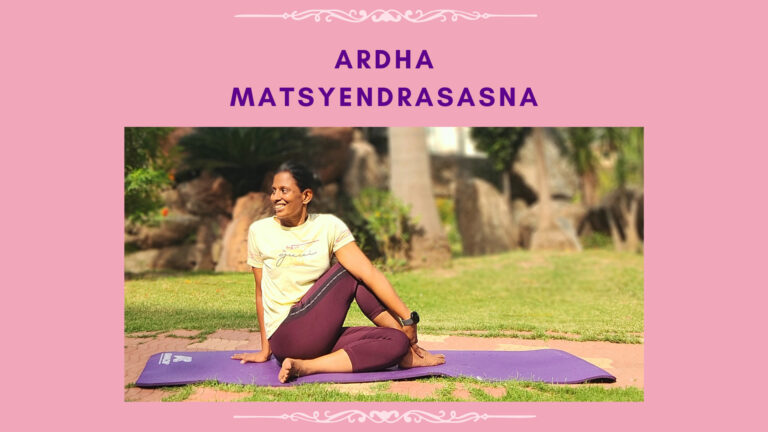
Seated Pose – Half Spinal Twist
Ardha Matsyendrasana is named after Rishi Matsyendranath who was a Hatha Yoga proponent and his favourite meditation asana was a full spinal twist itt was simplified so that everyone could also practise which we know as Ardha Matsyendrasana.
In this asana, sit on the mat with the legs stretched out straight in front of you, keeping the feet together and the spine erect. Bend the left leg, place the left heel beside the right hip. Take the right leg over the left knee place the right foot close to the left knee. Place the left hand on the right knee and the right hand behind you. Twisting the waist, shoulders and neck to the right look over the right shoulder. Keep the spine extended straight and erect. Hold while breathing in and out. Release the right hand first (the hand behind you), unwind the waist, then chest and the neck and sit up relaxed and straight. Repeat on the other side.
Contraindications:
Hernia, peptic, ulcer and severe spinal problem, as well as people who went for abdominal, heart or brain surgery. Pregnant women should not twist.
Benefits:
Increases the elasticity of the spine makes it supple which further help to relieve stiffness between the vertebrae and prevent back pain.
Benefits people with a mild slip disc problem.
Opens the chest and increases the oxygen supply to the lungs.
Helps to increase the digestive secretions by opening the chest.
Helps to strengthen abdomen, chest, spine, arms and hips
Loosens up the hip joints by relieving stiffness.
Increases the blood circulation to the pelvic region as well as enhance the functions of the reproductive system.
Helps heal piles and fissures due to good blood circulation.
Helps to prevent menstrual disorders and urinary tract related problems.
Helps relieve diabetics. The deep stretch and intense breathing work activates the pancreas by massaging and stimulating it.
Urdhva Mukha Svanasana – Supine Pose – Lying down with legs up against a wall
The pose described here is a passive, supported variation of the shoulder stand-like Viparit Karni. You’ll also need to rest your legs vertically on a wall or similar upright support.
Sit sideways with your right side against the wall, lie down lowering your back and head on the floor.
Exhale and, slowly slide your legs up onto the wall sideways while your back, shoulders and head are down on the floor.
Lift and release the base of your skull away from the back of your neck and soften your throat. Don’t push your chin against your sternum.
Open your shoulder blades away from the spine and release your hands and arms out to your sides, palms up.
Keep your legs straight. Feel the weight of your legs and belly deeply into your torso, toward the back of the pelvis. Soften your eyes and turn them down to look into your heart.
Stay in this pose for 1 minute you can increase to 15 minutes. Then bend your legs, and turn to the side.
Stay on your side for a few breaths, and come up to sitting with an exhalation.
Contraindications:
Glaucoma and serious eye problems, Back injury or problems or Neck injury or problems. Not to be done during Menstruation.
Benefits:
Helps ease Anxiety, mild Depression and calms the mind.
Heals Migraines, Headaches, Arthritis, Digestive problems, High and low blood pressure, Respiratory ailments, Uinary disorders, Varicose veins, Piles, Fissures and relaxes cramped legs and feet and reduces Insomnia.
Benefits circulation in the lower back and the abdomen region and its internal organs.
In women, it eases Menstrual cramps, Premenstrual syndrome and Menopause.
Benefits as described in Yoga Philosophy:
- “You will become adept in all the worlds and will not perish even at world dissolution (pralaya)” – Gheranda Samhita 3.36
- Hatha Yoga Pradipika 3.82 states grey hairs and wrinkles reduce
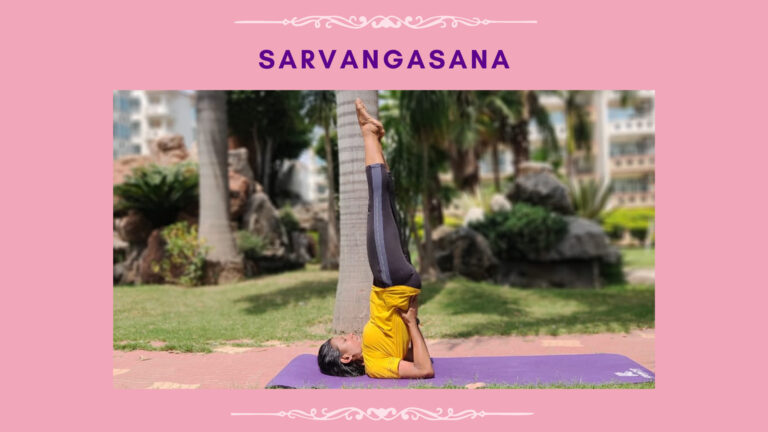
Inversion Pose
‘Sarva Anga’ – means full body. It is beneficial for all the systems of the body, especially the head that houses the brain.
Lie supine on a mat with your feet together and hands at the sides. While exhaling, raise your legs up together, toes to point towards the ceiling. Keep knees straight. Use your hands to support your body at the back the chin is set against the chest.
Maintain this pose for a few seconds or as long as convenient but not longer than two minutes, the breathing slow, rhythmic and natural.
Slowly bend your knees, then, as you inhale, lower your hips towards the mat, releasing your hands from back, lower the legs slowly without jerking the head.
Take a few deep breaths.
Precautions To Be Taken during Performance of This Asana:
Avoid any possible extreme strain. It is best to attempt this asana first in stages and attempt this asana only after a few weeks of preparation.
What needs emphasis is the fact that this pose should never be attempted after any form of rigorous Exercises because the rush of blood to the brain at this stage might do more harm than good. Place importance on the position and comfort of the neck.
Contraindications:
Hypertension, cardiac ailments, Pregnancy, Respiratory disorders, Cervical spondylosis, spinal problems, neck injuries or trauma, High myopia, glaucoma, serious eye disorders.
Benefits:
Physical
It strengthens your arms and shoulders.
It keeps your spine flexible.
It nourishes your brain with more blood.
It improves the functioning of your thyroid, parathyroid, and pituitary glands.
There are favourable changes in vasomotor ability due to the increased interchange of blood in the upper part of the body, especially the thorax, the neck, and the head.
Relief from congestion, through the rapid drainage of venous blood, in the abdominal and pelvic regions.
There is a good healing effect of gravity on the various organs of your body above the waist, including the endocrine glands.
It helps alleviate varicose veins.
It is helpful in constipation, dyspepsia, headache, giddiness, neurasthenia, functional disorders of the eye, the ear, the nose and the throat, general and sexual debility. It helps alleviate piles and fissures.
This is one of the most effective asanas for the increase of blood flow towards your brain., it not only impacts the whole body it makes your mind alert giving a feeling of self-confidence and self-reliance.
Psychological
It relieves stress as it calms your brain and nervous system.
It helps to balance the moods and calms your mind.
It increases your confidence.
Muscles Involved:
Trunk flexors and wrist extensors.
Flexors and extensors of the lower limbs.
Extensors of the neck and erector spinae.
Isometric contraction of the hip and knee.
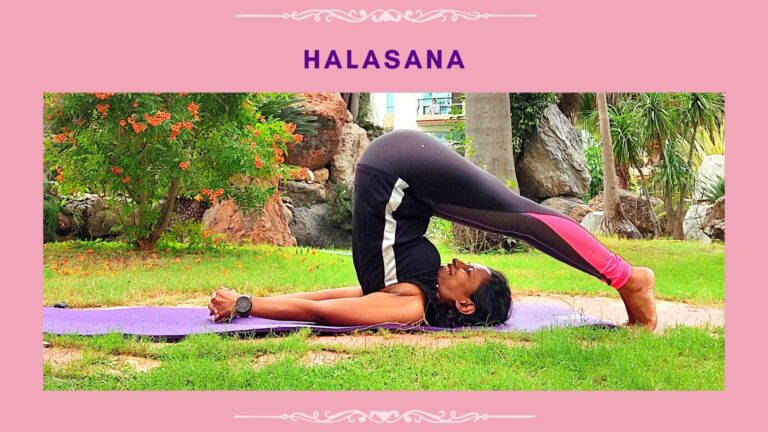
Inversion Pose
Hala means a traditional plow and Asana is a yoga position. In its final position this asana resembles a traditional plow, hence the name.
In Halasana, lie on the back with legs and arms close to the body. Place the palms on the floor and take a couple of deep breaths.
Raise both the legs up keeping them straight. Raise the buttock and legs over the head and touch the toes on the floor. Support the back with the palms. Breathe normally. Keep the position as long as it is comfortable.
In one of the variations of this pose, hands are kept on the floor with palms facing the floor.
To release, slowly bend knees and slowly lower hips and lower legs straight without any jerk. For beginners, hold a pose for 30 seconds to a minute. Extend the time to ten minutes or even more very gradually.
Contraindications:
Those suffering from cervical spondylitis, hernia, back pain, and other vertebral diseases should also avoid this practice.
Benefits:
It invigorates the digestive system and relieves constipation, and indigestion.
The internal organs in the abdomen are massaged and blood circulation is improved, the muscles here are strengthened. So it improves the functions of the liver, kidney, pancreas, and the adrenal.
It improves the functions of the thyroid and thymus gland and boosts the immune system.
It heals menstrual disorders.
Plough boosts the respiratory system and is very good for Asthma.
